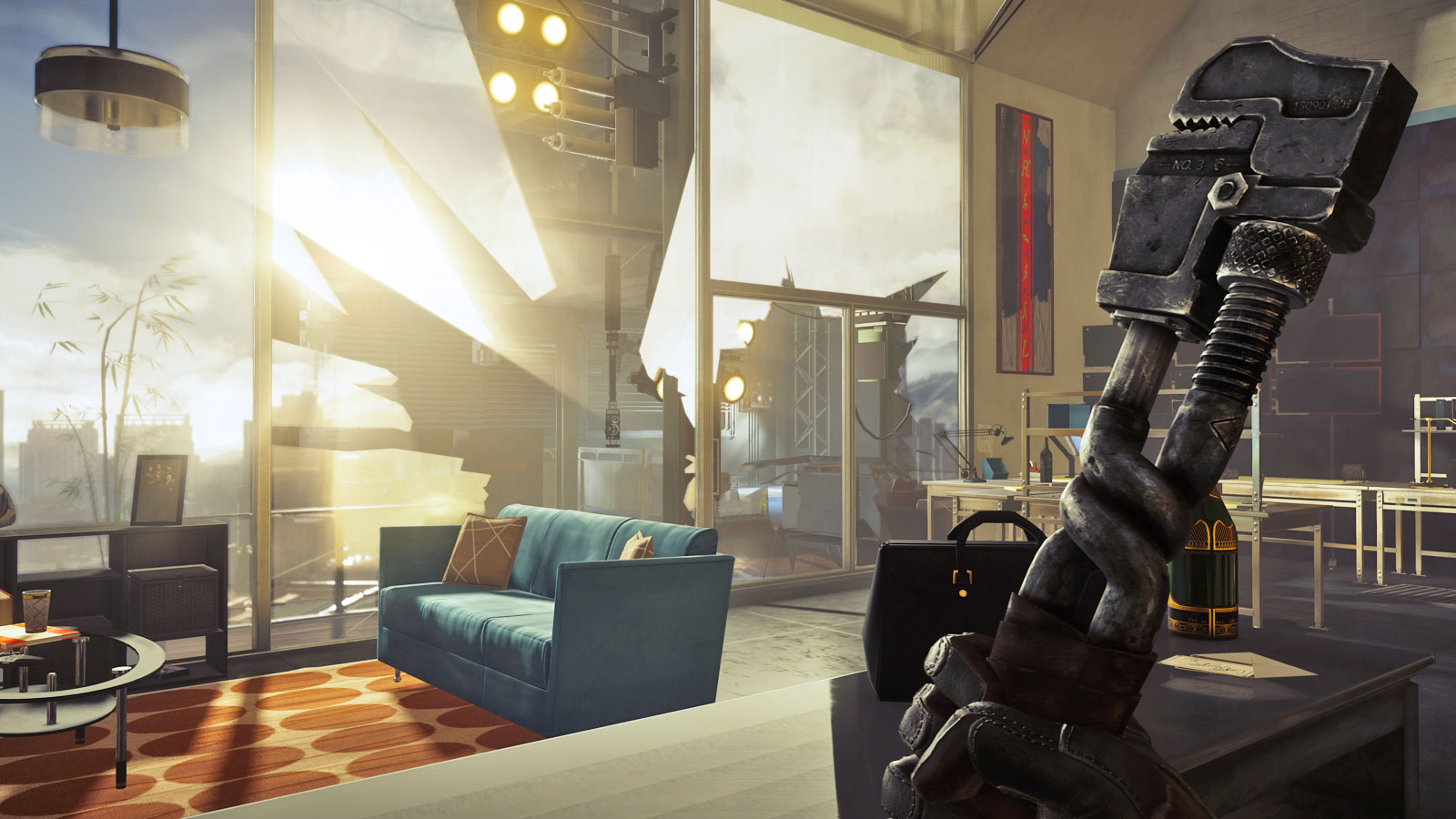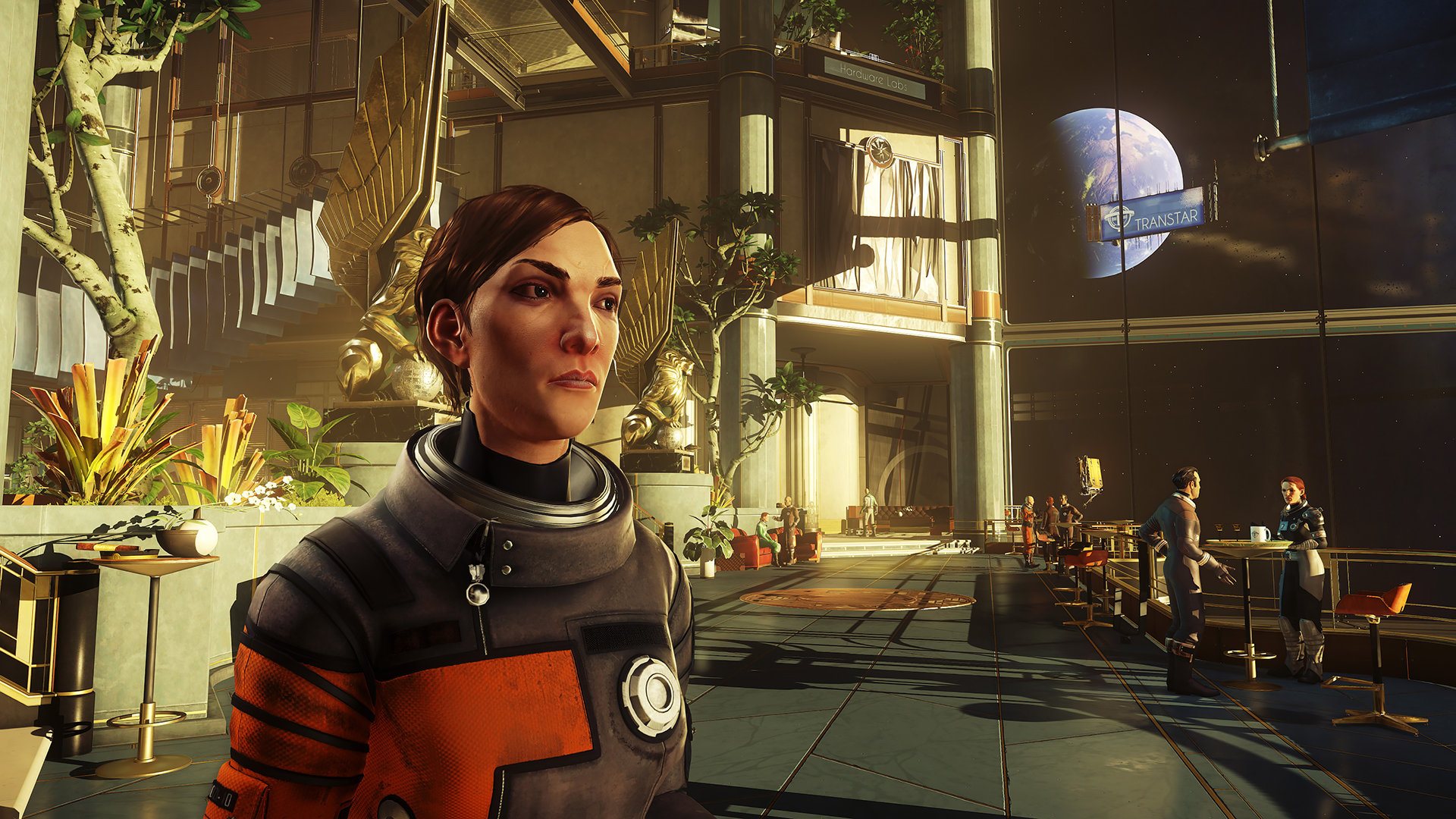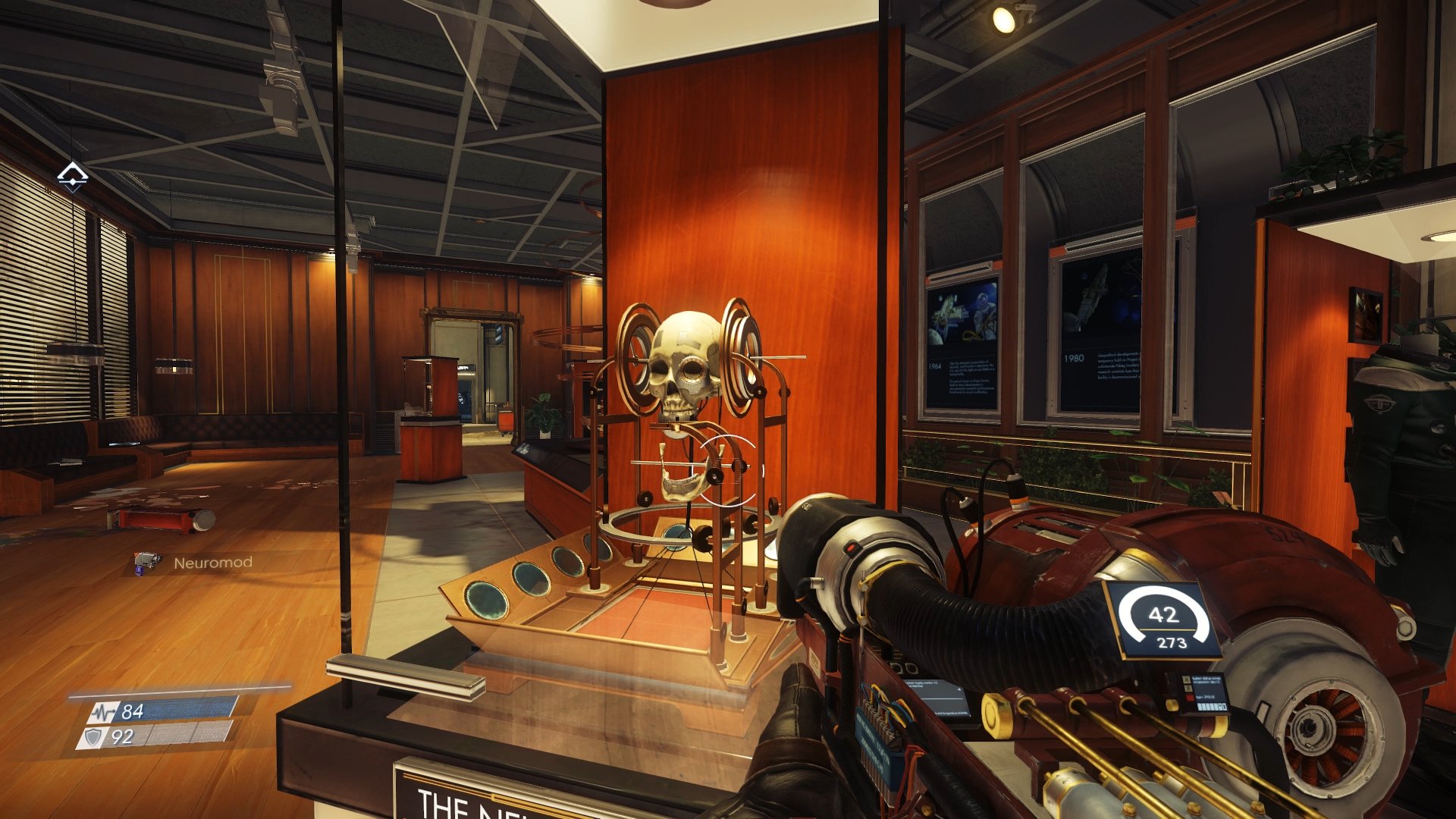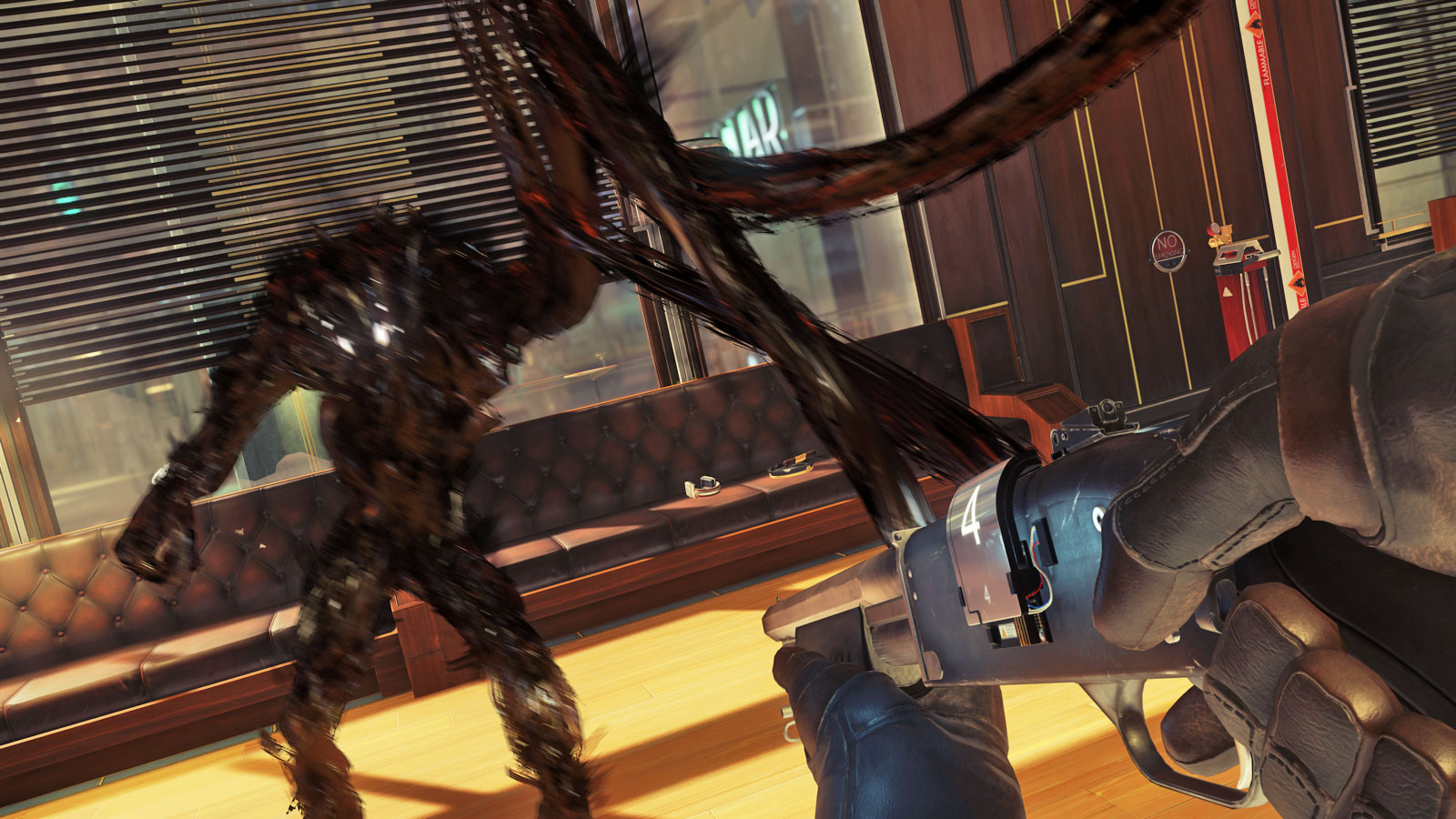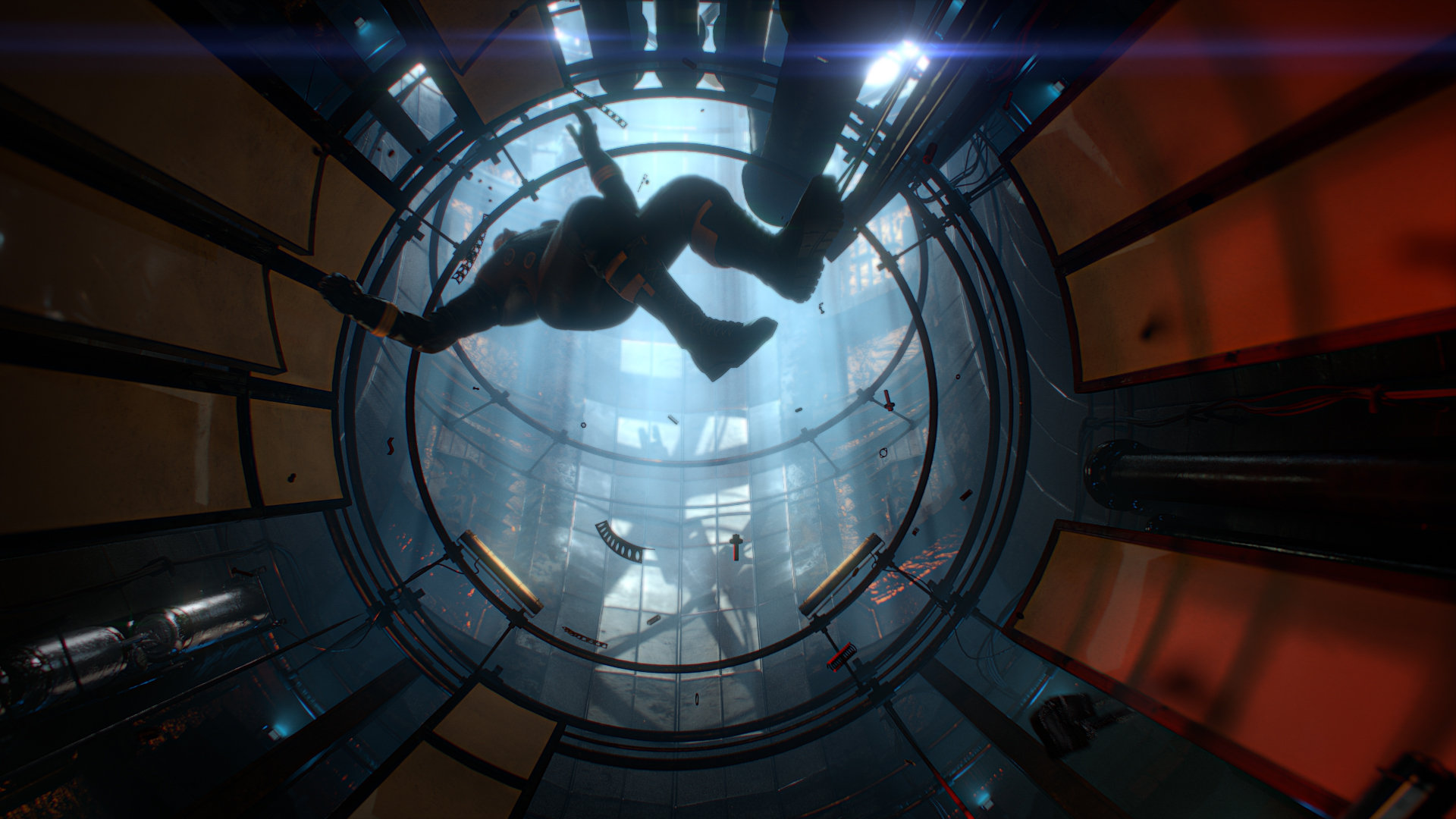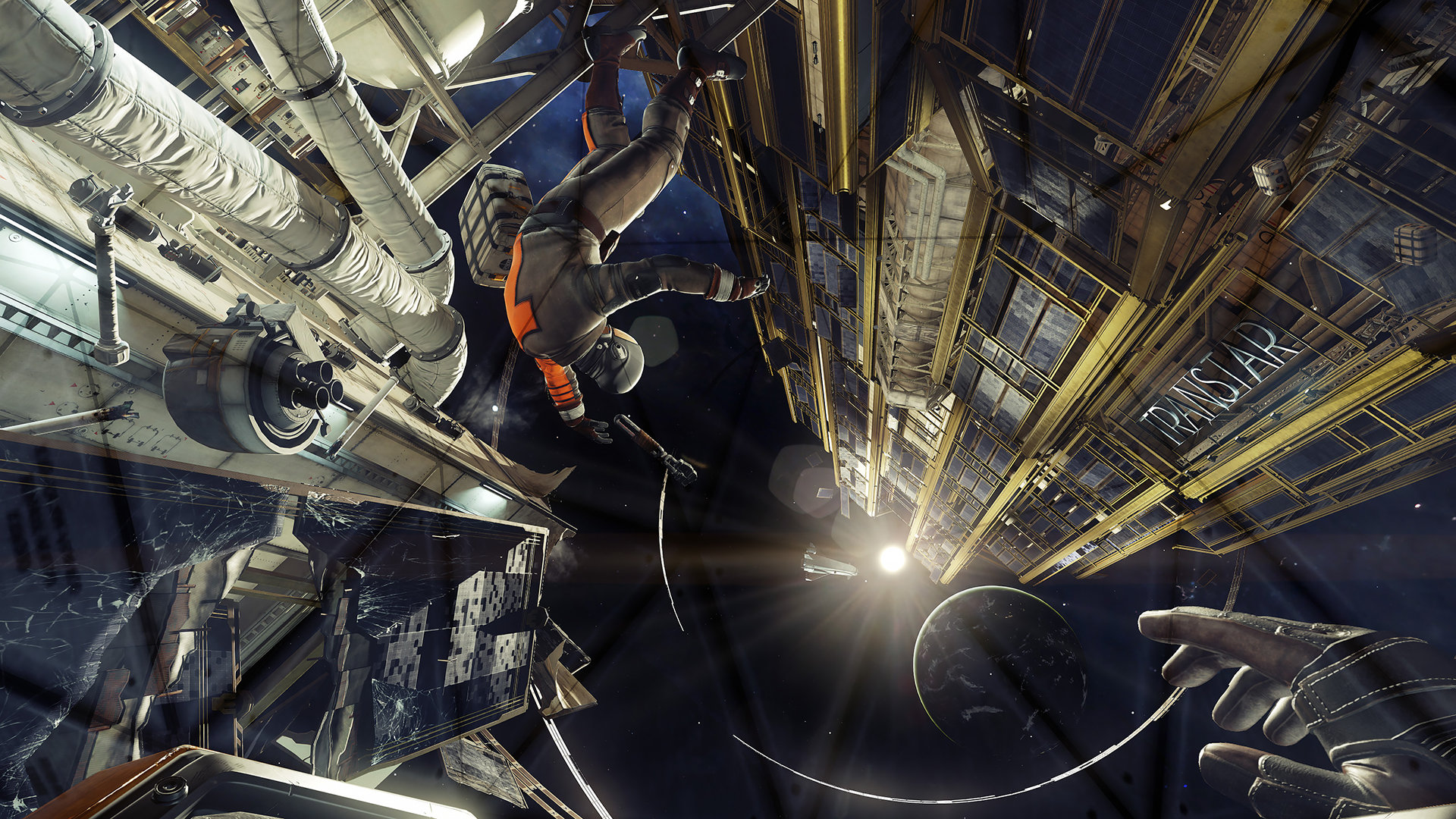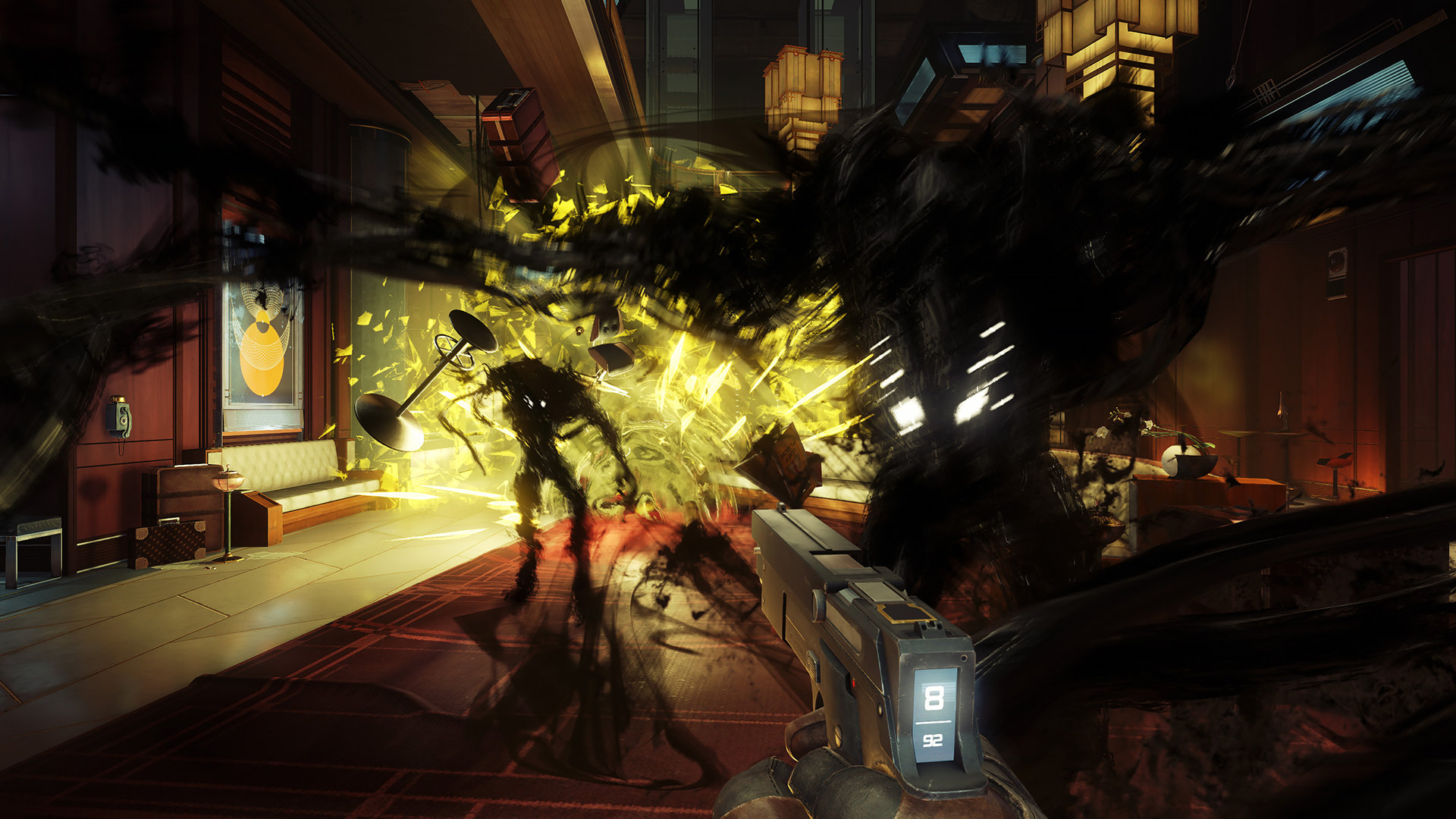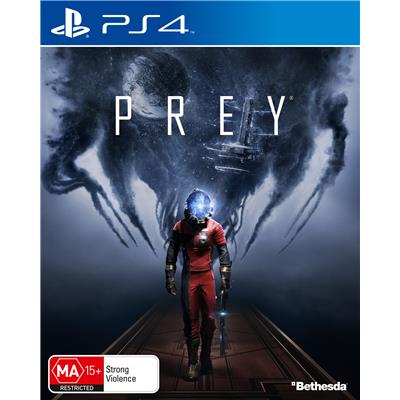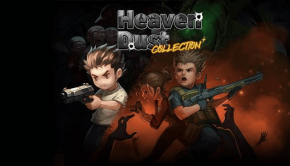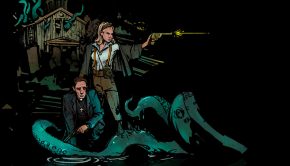Prey PS4 Review
Summary: Do yourself a favour and take a chance on Prey if mind bending FPS horror is your bag
4.1
The Hunted
I never got the chance to play the original Prey, so I wasn’t among the chorus of outrage that emerged when it was revealed that Bethesda was electing to reboot the franchise rather than continuing the story of original protagonist Tommy; the behind-the-scenes wrangling that went on during the development of the doomed Prey 2 does make for a fascinating read but, ultimately, the dark tale behind that failed project has no bearing on the game that has arrived bearing the same name.
Bethesda handed the reigns to Arkane Studios, who have well and truly proven their worth with their critically successful but commercially disappointing Dishonored 2, but there was a small but vocal contingent of the internet who felt that the style of stealth/action gameplay that Arkane was renowned for wasn’t a good fit for universe of Prey, and, well, they were right.
It’s a good thing then that Arkane were freed from the constraints of the previously established universe of the games and given carte blanche to create their own entirely original take on the sci-fi genre.
Prey sees players assume the role of Morgan Yu, who can be either male or female depending on the player’s preference. Morgan leads a seemingly normal life, with a nice apartment and a high-ranking scientist brother who soon calls you in to perform some training exercises in an attempt to get you onto his team.
After a brief helicopter journey, you diligently perform the tasks requested of you despite the increasingly condescending remarks of your trainers, before one of their coffee mugs suddenly sprouts legs and latches onto the nearest person, plunging Morgan into a twisted, paranoid journey through a space station in search of answers and, more importantly, survive.
After a relatively sedate opening, the tension levels are cranked to eleven and this sense of constant unease persists throughout most of the game. This is due in part to the nature of the earliest enemies you’ll encounter, the Mimics. Capable of replicating any item that you’ve handled, a seemingly unassuming chair could viciously spring into action and you’ll have to frantically fend off a scurrying, headcrab-esque creature with your wrench.
The limited selection of weaponry also plays a large part in just how anxiety-inducing these early sections are; as you progress through the first area you’ll eventually come across the GLOO cannon, which allows you to coat enemies with a quick-drying resin, immobilising them and giving you a few free shots with the wrench. Shattering a foe frozen mid-attack is an immensely satisfying experience and the GLOO makes taking on mobs of enemies a much more viable task, as well as offering up alternative ways to bypass gas leaks and other environmental hazards.
You’ll later gain access to more traditional weapons such as shotguns and pistols but there remains an element of playfulness throughout, with the ability to equip what is, in essence, a Nerf crossbow. This might sound like a goofy but ultimately useless little addition but you can actually employ this unassuming weapon to solve puzzles at certain points; you aren’t directed to do this either, rather it’s a natural evolution that comes from experimenting with your environment whilst you explore the hallways of Talos-1.
With the more advanced arsenal comes a sense of confidence, which is then quickly slapped back into oblivion when you stumble across the next terrifying creature lurking in the shadowy room you’ve just unlocked. Exploration plays a big role in Prey, with multiple routes locked off until you gain the abilities or keycards necessary to bypass barriers. There are a few zero gravity sections that can feel a little bit fiddly in terms of traversal but, for the most part, exploring the abandoned space station is a satisfying experience. Keycards can be found littered throughout the area but in order to hack certain panels you’ll need to unlock the ability via the Neuromod skill tree.
Neuromods work in a similar fashion to Plasmids from Bioshock, granting the user enhanced powers and abilities; there’s a surprising amount of flexibility in regards to which areas you choose to focus on first: Upgrade your strength and you can move that bookcase blocking your way, or enhance your hacking abilities, get past the security lock on the adjoining room and then get to you destination through the vents… Rarely do you feel restricted.
There’s also a multitude of side missions and tasks you can choose to undertake during your quest for answers. Although not necessary for completion, when the rewards range from new weapons to extra neuromods, there’s little reason not to give them a shot, especially as most of them are engaging enough to distract you from the main story… I even got a little giggle when I completed the task of locating crew member Morgan Yu by merely logging into a computer and then standing still for a few seconds until it popped up as completed.
The combat feels smooth and intuitive and the controls are fairly easy to pick up. I’ve heard some complaints about the inventory system but I personally just used auto-sort and didn’t encounter many issues. There were times where I had to juggle what I as carrying in terms of what was important for my immediate survival, but with recycling machines capable of turning trash into materials you can use for crafting fairly abundantly dotted about the place, I never felt the sting of being overburdened.
Graphics and Audio
Prey has a visual aesthetic that’s comparable to that of Seventies Sci-fi films. Much like the recent and underappreciated Headlander, Prey is full of heavy Soviet visual influences, even more prevalent here due to the backstory of the alternate timeline that led to these events. Arkane decided on a heavily stylised artistic direction for the character models that works well in enhancing the dreamlike, unstable reality nature of the gameplay.
The sound design might be Prey’s biggest asset, however, with DOOM’s Mick Gordon returning for a more subdued space romp that lets him flex his musical muscles. The adrenaline pumping soundtrack and ambient noises of the decaying ship are all of the highest order, although the musical cues that signal the presence of an enemy can diminish the shock factor of surprise attacks somewhat once you become accustomed to them.
Final Thought
I really, really enjoyed Prey. A pitch perfect marriage of Science-Fiction and Horror, Prey is close to what I imagine a modern, FPS Dead Space would be like, with a liberal helping of System Shock sauce sprinkled on top.
What is kind of disheartening is seeing how Prey has performed in the week since its release; many have commented on the almost completely absent advertising, aside from the stealth releasing of the demo, which is admittedly attention grabbing if you’re aware of it but this doesn’t seem to be the case in many quarters. This has led to a lot of gamers not even being aware that the game has released yet, with most major outlets only getting their final reviews up over the last day or so.
This calls into question Bethesda’s recent decision to hold off on review copies for the press until release, a strategy that worked wonders for DOOM, particularly after the horrendously received multiplayer Beta, but it appears that Dishonored 2 and now Prey, both quality games, have suffered in terms of sales as a result of this approach.
This genuinely suckles the nuggets as Prey deserves to be experienced by as wide an audience as possible. The story is gripping, the combat is exhilarating, the horror elements are genuinely horrifying and the fear that comes with furtively entering a room and checking inanimate objects for signs of life is a sensation that’s hard to replicate and even harder to maintain throughout a game’s length.
Do yourself a favour and take a chance on Prey if mind bending FPS horror is your bag… Lord knows it needs the support and I for one would love to see the franchise move from strength to strength with a follow up instalment.
Recommended.
Game Details
Primary Format – Games – PlayStation 4 (Reviewed), Xbox One, PC
Game Genre – Shooter
Rating – MA15+
Consumer Advice – Strong violence
Game Developer – Arkane Studios
Game Publisher – Bethesda Softworks
Reviewer – Sean Warhurst




